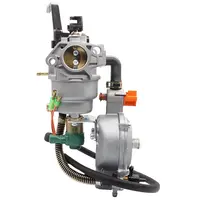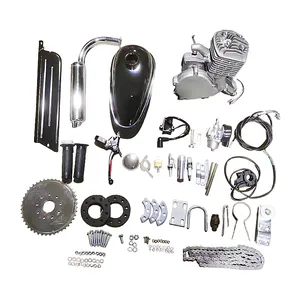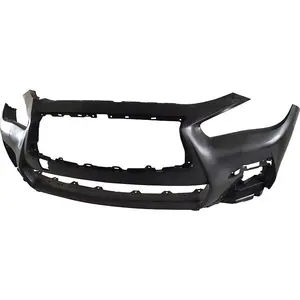Popular in your industry

































































































































































































Top categories
About dual carburetor
In the quest for peak automotive performance, the dual carburetor system stands as a pivotal innovation for high-performance engines. This comprehensive guide delves into the world of dual carburetors, revealing how they unlock efficiency and power in ways that single carburetor setups cannot match. From understanding their operation to selecting the right type for your engine, we'll explore the intricacies of dual carburetors and their role in enhancing engine capabilities. Whether you're a seasoned gearhead or a curious enthusiast, prepare to gain valuable insights into optimizing your engine's air and fuel mixture for that extra edge on the road or track.
Understanding Dual Carburetors

Understanding the intricacies of dual carburetors is essential for optimizing engine performance. A four-barrel carburetor, which is essentially a dual carburetor, comprises two primary and two secondary barrels. The primary barrels are responsible for engine operation at low speeds, while the secondary barrels are activated as the engine's demand for air and fuel increases with higher RPMs. The secondary barrels' operation can be vacuum, mechanical, or air valve controlled. Vacuum secondaries are connected to a diaphragm and open in response to the engine's vacuum, making them suitable for varying driving conditions. Mechanical secondaries, on the other hand, are linked to the throttle and provide a direct response to the driver's input, ideal for racing applications. Air valve secondaries utilize a valve that responds to engine vacuum and are known for their responsive performance in street vehicles. The timing and rate at which these secondary barrels open are crucial for maintaining the right air-fuel mixture, ensuring optimal engine performance without sacrificing power or acceleration.
The Role of Dual Carburetors in High-Performance Engines
Upgrading to a dual carburetor setup can significantly impact engine performance, particularly in high-performance applications. A single carburetor may suffice for standard driving conditions, but at high RPMs, the engine's demand for air and fuel surpasses what a single carburetor can supply. Dual carburetors offer a more efficient fuel and air mixture delivery, ensuring that the engine receives the optimal amount at higher speeds.
However, it's important to consider the engine's displacement when selecting a dual carburetor system. An engine can only consume a certain amount of fuel-air mixture, and over-carbureting can lead to performance issues such as running lean at low RPMs and a lackluster mid-range response. Therefore, while dual carburetors can enhance performance, they must be properly sized and tuned to the specific engine to realize their full potential.
Moreover, the benefits of dual carburetors are more pronounced when combined with other engine modifications. Porting the head, matching the intake and exhaust manifolds, optimizing valve size, and performing a three-way cut for the valve seats can all contribute to a significant increase in performance. These enhancements, along with a free-flowing exhaust and a hotter cam profile, can elevate the high RPM performance to new levels, making the addition of a dual carburetor system a worthwhile consideration for those seeking to maximize their engine's capabilities.
Types of Dual Carburetors Available on Alibaba.com

Alibaba.com showcases a diverse range of dual carburetors designed to enhance engine performance across various vehicle types. Among the offerings, there are dual fuel carburetors suitable for small to medium-sized engines, emphasizing versatility in engine compatibility. For specific models of chainsaws and other power equipment, there are carburetors tailored to these engines, ensuring a precise fit and optimal function.
Generators also benefit from the dual carburetor technology, with conversion kits available for portable generators, ranging from 2KW to 6KW. These kits not only support gasoline but also LPG and CNG, highlighting the adaptability of dual fuel systems. The carburetors are well-catered to with options that support both LPG and CNG, offering a seamless transition between fuel types.
For high-performance needs, the market includes manual dual fuel carburetors for engines capable of powering 4.5KW to 6KW generators. These carburetors are engineered to accommodate the demanding requirements of larger engines, providing the necessary fuel mixture for efficient operation. Additionally, the dual fuel carburetor options extend to fit a range of generator engines, ensuring that users can find the right match for their equipment's specifications.
Features and Specifications of Dual Carburetors
The Dual Carburetor Kit is a notable example of dual carburetors designed to enhance engine performance. This kit includes two carburetors that are linked and custom jetted according to specific engine requirements. The customization aspect ensures that the carburetors are tailored to meet the unique demands of different engines, which can significantly improve efficiency and power output.
These carburetors come with the flexibility of color options, allowing for a degree of personalization. While the original content does not specify the materials used, dual carburetors are typically manufactured from materials that provide durability and resistance to the stresses of high-performance engine operations. The kit, with its focus on customization and performance, exemplifies the advanced features that are sought after in dual carburetors for high-performance engines.
Materials and Manufacturing of Dual Carburetors
The materials used in the construction of carburetor spacers, which are integral to the performance of dual carburetors, are diverse, each offering unique benefits. Aluminum is favored for its durability and the ease with which it can be modified for tuning purposes. It's particularly prevalent in racing due to its acceptance by many racing sanctioning bodies.
Wood, with its superior insulating properties, stands out as the best insulator among the materials. However, its susceptibility to gasoline and chemicals, leading to potential warping and vacuum leaks, necessitates regular inspection and replacement.
Phenolic resin is another material used, with a good balance of insulation and resistance to fuel and chemicals, which enhances its durability. Polymer materials, while less expensive, indicate lesser insulation capabilities. However, advancements in polymer technology have resulted in variants that nearly match the insulating efficiency of phenolic resin.
Selecting the Right Dual Carburetor for Your Engine

When choosing the right dual carburetor for your engine, it's essential to consider the engine size and the intended usage. A general guideline suggests 40mm carburetors for engines around 1600cc, 44/45mm for engines from 1776cc to 2000cc, and 48mm for larger engines. This sizing ensures optimal performance without immediate need for venturi upgrades.
For engines that rev higher, a larger carburetor may be necessary to maintain performance. Conversely, if you're running a larger engine at lower RPMs, a smaller carburetor could suffice. The balance between engine displacement and RPMs is crucial for selecting the appropriate carburetor size.
The choice between different models also plays a role in selection. While some models may not be available, common choices for street use due to their availability and performance characteristics are often preferred.
Finally, consider the type of fuel you plan to use, especially if you frequent the drag strip, as certain carburetors are better suited for specific fuel types. The selection process is a balance of performance needs, budget, and the specific characteristics of your engine and driving conditions.
Installation Tips for Dual Carburetors
Setting up dual carburetor linkage can be a complex task, particularly with side-mounted double pumpers. To ease the process, it's beneficial to start with a clear understanding of the assembly. A visual guide, such as an exploded view diagram, can be invaluable for identifying parts and visualizing the final setup.
During installation, it's crucial to ensure that all components, including rod ends, stainless bolts, and anodized tube nuts, are correctly positioned. This not only affects the performance but also the aesthetic appeal, as these elements are often visible and contribute to the engine's overall look.
Some enthusiasts encounter issues with the linkage adjustment, which can prevent the secondary carburetors from fully opening. This could be due to insufficient throw from the gas pedal. In such cases, considering an adjustable arm or a different pedal setup might resolve the issue.
Lastly, attention to detail is key. For instance, the positioning of the rod end on the carb lever can be critical, and while some setups may work even if it seems counterintuitive, it's always best to follow recommended practices for optimal performance and to avoid potential problems down the line.
Advantages of Upgrading to Dual Carburetors
Upgrading to dual carburetors can potentially enhance engine performance, particularly in high RPM ranges. While a single carburetor may suffice for standard applications, dual carburetors offer a more direct and shorter inlet path to the engine, which can improve efficiency at higher speeds. This setup can be advantageous for those seeking improved performance, as it allows for better air and fuel mixture delivery, which is crucial for engines operating beyond the usual RPM range.
However, it's important to note that simply adding an additional carburetor without other modifications may not yield significant gains. For a noticeable improvement in performance, it's often recommended to port the head, match the intake and exhaust manifolds for optimal flow, and consider upgrading valves and valve seats. These enhancements, in conjunction with dual carburetors, can lead to a marked increase in engine output. Additionally, while there may be some tinkering required with needle jets and balancing the carbs, the potential for increased power can make this a worthwhile endeavor for enthusiasts.
It's also crucial to consider the implications of such modifications in regions with strict emissions regulations. Upgrades that significantly alter the engine's characteristics may affect its ability to pass emissions tests. Therefore, it's essential to weigh the benefits of dual carburetors against the practicality and legality of such modifications in your area.
Maintenance and Troubleshooting for Dual Carburetors
Maintaining dual carburetors requires precision and care, especially when rebuild kits are not readily available. A thorough cleaning routine is essential for performance upkeep. Start by disassembling the carburetor, ensuring all small parts are kept organized for easy reassembly.
Cleaning involves meticulous attention to both the exterior and interior of each part, followed by a careful drying process. Compressed air can be used to dry the carburetor body and ensure no moisture remains that could affect functionality.
Special consideration is needed for delicate components such as the reed valve and diaphragm. These should be cleaned with minimal fluid and low pressure to prevent damage. In cases where parts are irreplaceable, the emphasis should be on careful handling to extend the life of the carburetor.
Reassembly is a precise process, with the needle valve mechanism often being the most complex step. Ensuring that all parts are correctly aligned and secured will prevent issues upon restarting the engine. Regular maintenance and gentle troubleshooting are key to sustaining the performance and reliability of dual carburetors.
Conclusion
In conclusion, dual carburetors represent a significant upgrade for those looking to push their engines beyond conventional performance limits. By offering a more efficient air and fuel delivery system, they ensure that high-performance engines operate with improved precision and power at high RPMs. Selecting the right carburetor requires careful consideration of engine size, usage, and fuel type, while installation demands meticulous attention to detail. The advantages of upgrading are clear, with the potential for increased engine output and efficiency. However, maintenance and troubleshooting are paramount to preserve the sophisticated functioning of these systems. As we've seen, whether it's for a chainsaw or a high-powered race car, the right dual carburetor setup can make all the difference, transforming a standard engine into a high-performance powerhouse. Remember to balance the benefits with the practicality of your specific situation, especially in light of emissions regulations. With the right approach, dual carburetors can be a game-changer for automotive enthusiasts seeking the ultimate in engine performance.


















































